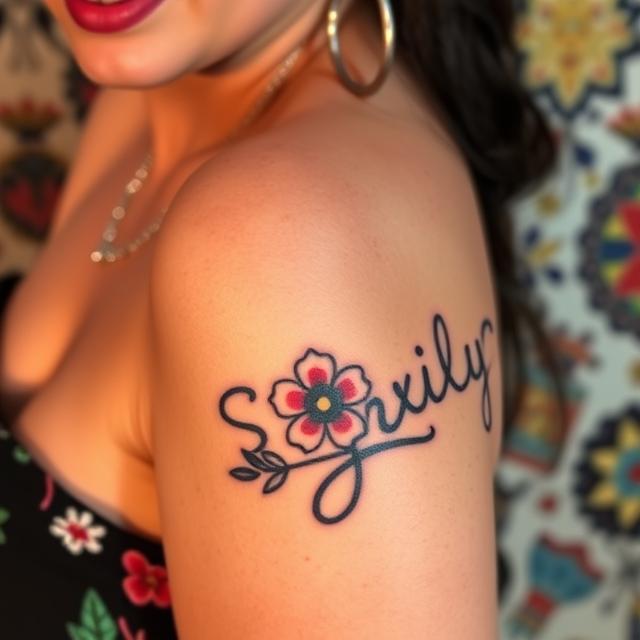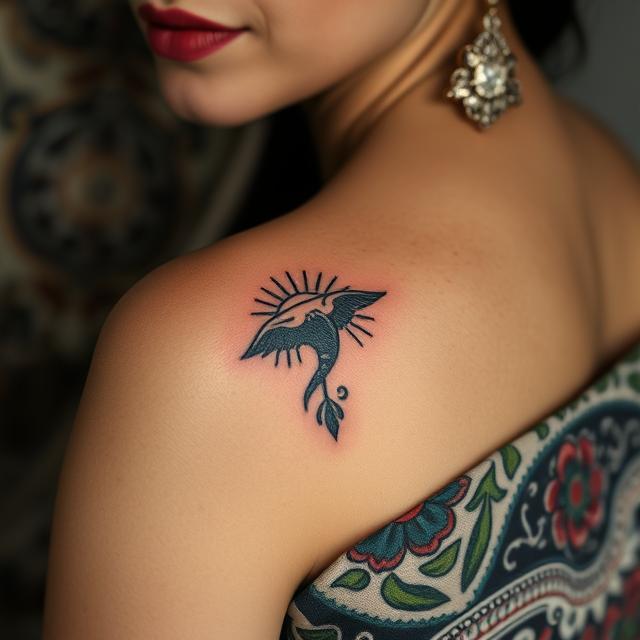Mexican tattoo art is deeply rooted in history, culture, and symbolism, offering vibrant stories etched into the skin. For women seeking meaningful and bold tattoos that pay homage to Mexican identity, heritage, and emotion, there are endless design options—each carrying powerful significance. Whether inspired by ancient traditions, religious icons, or modern Mexican pride, these tattoos are more than just body art—they’re declarations of strength, femininity, and connection to one’s roots. Below are ten powerful Mexican tattoo designs for women that blend beauty, depth, and bold cultural resonance.
1. La Catrina Skull Tattoo
La Catrina, the elegant female skeleton, is one of Mexico’s most iconic Day of the Dead symbols. This striking figure, originally illustrated by José Guadalupe Posada, represents the blending of indigenous beliefs and Spanish influence, symbolizing that death is a natural part of life and should be celebrated, not feared. For women, La Catrina tattoos can serve as a reminder of resilience, transformation, and familial reverence. Often designed in vibrant colors with floral accents like marigolds or roses, La Catrina exudes both strength and beauty. The tattoo may also incorporate traditional Día de los Muertos patterns, such as sugar skull details, candles, and religious motifs, adding layers of meaning. This design honors lost loved ones while also emphasizing feminine empowerment—La Catrina is powerful, composed, and eternal. The placement possibilities are versatile, but many women choose areas like the thigh, upper arm, or back to allow for expansive detail. When done in full color or black and gray realism, this tattoo becomes not just an artwork but a proud cultural statement of identity, mortality, and eternal beauty.

2. Virgin of Guadalupe Tattoo
The Virgin of Guadalupe is not just a religious figure; she is a powerful national and feminist symbol in Mexico. This tattoo reflects deep spirituality, maternal care, and unwavering strength. For many Mexican women, wearing this sacred image on their skin is an expression of protection, love, and cultural pride. The Virgin is often depicted in her traditional cloak of stars, standing on a crescent moon, surrounded by rays of golden light. Some tattoos include roses, as legend tells of the miracle of roses given to Juan Diego. This design can be inked in rich colors or black-and-gray, both forms equally striking and symbolic. Women may choose this tattoo to commemorate their faith, honor their mothers or grandmothers, or to connect with divine feminine energy. It’s commonly placed on the back, chest, or arm, depending on the size and level of detail. This tattoo isn’t just spiritual—it’s revolutionary. The Virgin of Guadalupe has been used in protests, feminist movements, and cultural identity revolutions. She represents grace under pressure, quiet resistance, and hope. A bold yet sacred tattoo, it allows the wearer to carry divine light and legacy with them every step of their journey.
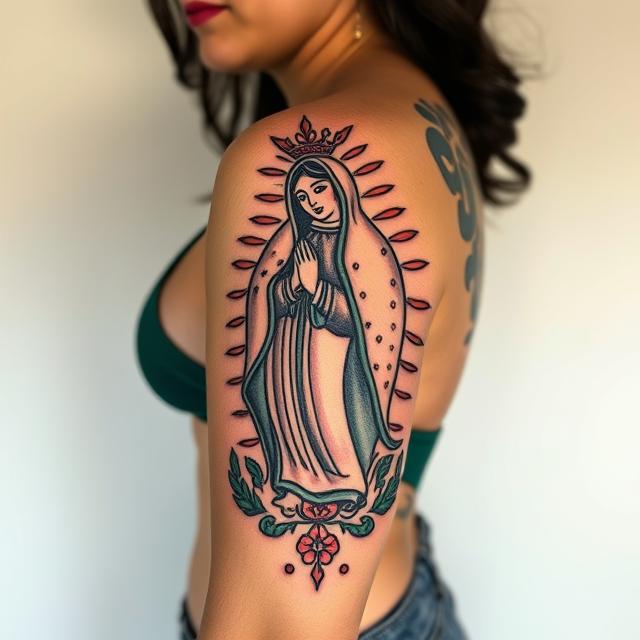
3. Aztec Calendar (Sun Stone) Tattoo
The Aztec Sun Stone is a mesmerizing circular design filled with intricate carvings that tell the story of time, life cycles, and divine prophecy. For women seeking a tattoo that honors ancient wisdom, indigenous roots, and strength through history, this piece is unmatched. At the center is Tonatiuh, the sun god, whose fierce face reminds us of life’s demands and rewards. Surrounding him are rings representing cosmic ages, directions, and elemental energies. Women often personalize this design by adding elements like flowers, feathers, or modern geometric accents to blend heritage with personal expression. Bold in both appearance and meaning, this tattoo is usually inked on the upper back, shoulder blade, or thigh to accommodate its intricate details. It speaks to those who carry the power of ancestral memory, who honor the earth and time, and who lead with inner fire. For Mexican women, the Aztec calendar isn’t just a tattoo—it’s a connection to the past, a map for the present, and a symbol of strength for the future. The powerful symmetry and storytelling embedded in this tattoo make it a bold declaration of heritage and identity.
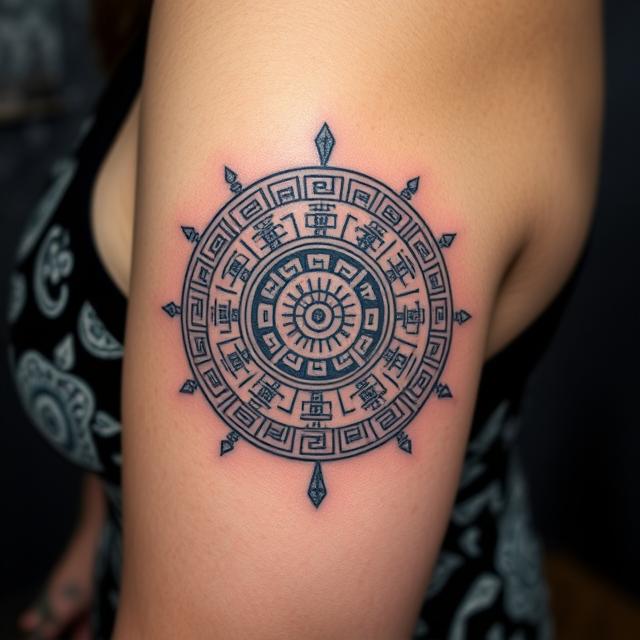
4. Sugar Skull (Calavera) Tattoo
Sugar skulls, or “calaveras,” are vibrant emblems of Día de los Muertos, representing both death and celebration. These elaborately decorated skulls remind us that life is fleeting, yet beautiful. For women, a sugar skull tattoo can embody remembrance, personal loss, and joy in honoring those who have passed. Unlike traditional skull imagery associated with fear or darkness, the calavera is adorned with flowers, hearts, crosses, and vivid patterns, transforming it into a colorful celebration of life and femininity. Often designed in bright hues—reds, blues, purples, and yellows—the sugar skull becomes an eye-catching yet deeply meaningful tattoo. Some women incorporate names, dates, or portraits within or around the design to personalize the tribute. Placement can vary—forearm, calf, shoulder—but it’s the emotional resonance that makes it truly bold. These tattoos remind us of the eternal bond between the living and the dead, and the importance of cherishing memories. A sugar skull tattoo is more than ornamental; it’s a powerful piece of cultural storytelling, wrapped in beauty, grief, and unshakable love. Women who wear this design carry the spirits of their ancestors proudly and artistically, turning sorrow into strength.
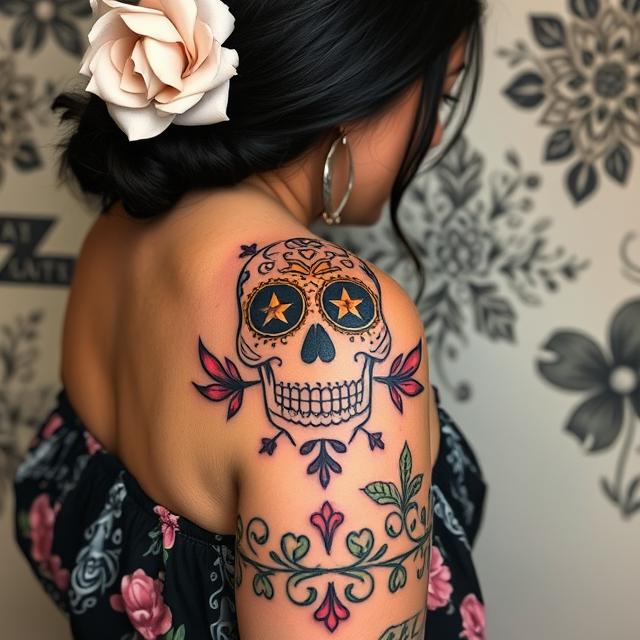
5. Frida Kahlo Portrait Tattoo
Frida Kahlo, the iconic Mexican artist, is a symbol of pain, passion, resilience, and unapologetic individuality. Her image has become a feminist rallying cry, making her portrait an incredibly empowering tattoo for women. Known for her unibrow, floral crowns, traditional Tehuana dresses, and piercing gaze, Frida’s likeness is instantly recognizable and deeply revered. A tattoo of her face often incorporates her signature floral motifs, parrots, or even elements from her surrealist paintings—such as anatomical hearts, monkeys, or fractured symbols—to reflect her inner turmoil and boundless creativity. Women who choose a Frida tattoo often relate to her story of overcoming trauma, expressing raw emotion, and rejecting societal expectations. It’s a defiant tribute to personal power, artistic identity, and emotional vulnerability. Usually placed on the arm, back, or thigh, Frida’s portrait demands attention—not only for its bold visuals but for the narrative it carries. This tattoo becomes a mirror of the wearer’s own story of struggle, self-expression, and radical strength. A Frida Kahlo tattoo is not just about honoring a legend—it’s about embodying her spirit, wearing courage, and celebrating individuality with every brushstroke of ink.

6. Sacred Heart Tattoo
The Sacred Heart is a potent Catholic symbol representing divine love, suffering, and hope. In Mexican culture, it’s a prevalent icon in altars, folk art, and religious devotion. For women, a Sacred Heart tattoo becomes a personal emblem of enduring passion, resilience through pain, and spiritual strength. Often depicted as a flaming heart pierced by thorns or swords and encircled by radiating light, it symbolizes Christ’s love and sacrifice—but also resonates universally as a symbol of emotional depth. Women frequently stylize the design with flowers, doves, or banners containing meaningful phrases. It can represent romantic love, grief, or unwavering belief in oneself or a higher power. This tattoo is popular on the chest, shoulder, or upper arm, where its emotive impact is strongest. It’s bold because it’s honest—showing the wearer’s openness to pain, transformation, and healing. Some may choose to merge it with other Mexican motifs like La Virgen or roses to deepen the cultural and spiritual narrative. The Sacred Heart tattoo tells a story of vulnerability worn as armor, of emotion not hidden but celebrated. For Mexican women, it’s a visual heartbeat of devotion, strength, and love that endures.
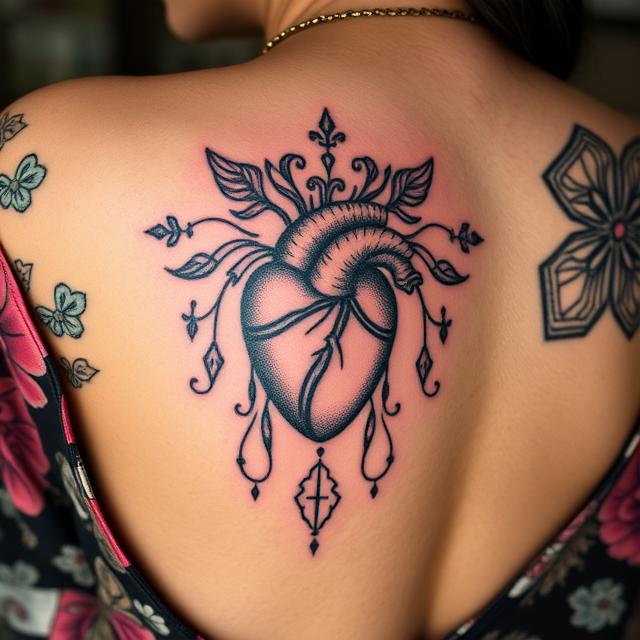
7. Papel Picado Inspired Tattoo
Papel picado, the traditional decorative paper banners used in Mexican celebrations, may seem delicate—but they carry powerful meaning. These intricately cut paper designs symbolize festivity, life, and impermanence. For women seeking a tattoo that feels light, feminine, but bold in meaning, a papel picado-inspired design is perfect. These tattoos often include lace-like borders, hearts, skulls, birds, or flowers, mimicking the perforated paper patterns. In tattoo form, they become permanent reminders of joy, cultural pride, and the fragility of life. Some women use these designs to celebrate weddings, births, or honor those who have passed away. Color choices vary—some go for bright festival hues like pink, yellow, and turquoise, while others prefer a subtle black-and-gray lace style. Placement on the forearm, collarbone, or ribs allows the intricate design to flow with the body’s movement. What makes this tattoo bold is its juxtaposition: the fragility of paper turned into enduring ink. It captures the essence of celebration, even in grief, and the beauty of Mexican heritage woven through everyday life. Papel picado tattoos allow women to express vibrancy, nostalgia, and a deep love for tradition with poetic elegance.
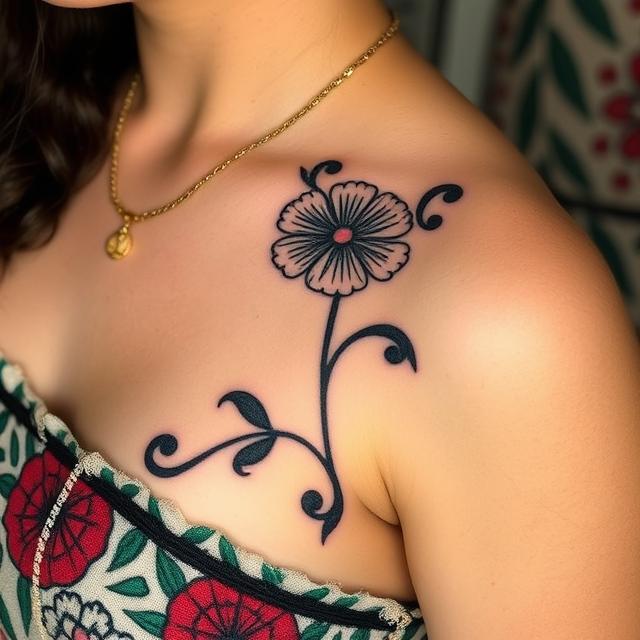
8. Jaguar (Ocelotl) Tattoo
In Aztec mythology, the jaguar—known as ocelotl—is a sacred warrior animal, symbolizing power, stealth, and nighttime strength. Women who choose a jaguar tattoo are often asserting their inner fierceness, courage, and intuitive wisdom. Traditionally, the jaguar was associated with the elite warrior class and was revered as a guardian of the underworld. As a tattoo, it can be rendered realistically, showing the animal mid-prowl or roaring, or stylized with Aztec patterns and glyphs for a more mythological feel. The jaguar’s eyes and fur patterns can be emphasized to portray both beauty and intimidation. Women often place this tattoo on the thigh, back, or ribcage to give the design space to breathe and evoke movement. The jaguar is more than just a predator—it’s a symbol of feminine rage, instinct, and protection. It doesn’t just represent physical strength but also spiritual guardianship and transformation. A jaguar tattoo can be a talisman, a battle cry, or a deeply personal mark of resilience. It stands for the parts of a woman’s identity that are untamed, ancient, and fiercely alive. In Mexican tradition, this design roars with cultural power and raw elegance.
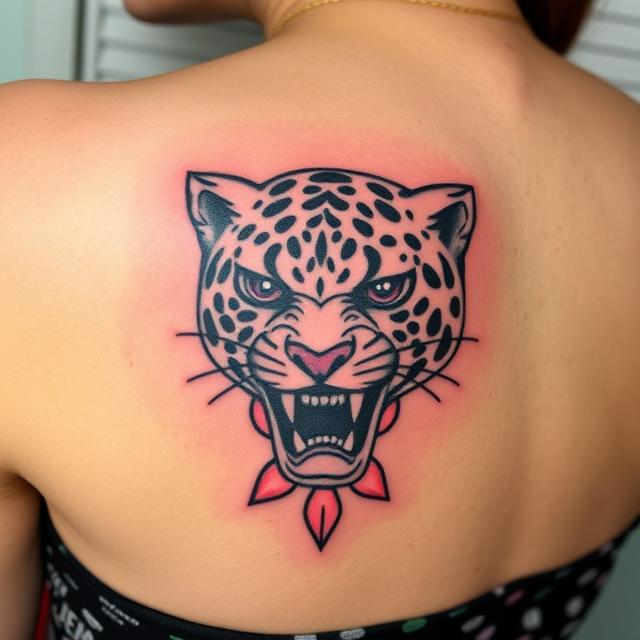
9. Milagros (Miracle Charms) Tattoo
Milagros, or “miracles,” are small folk charms used in Mexican culture as offerings to saints or symbols of prayer and hope. Often shaped like hearts, eyes, hands, or animals, these tokens represent a person’s intentions, healing, or gratitude. As a tattoo design, Milagros offer a deeply symbolic and versatile option for women. They can be tattooed individually or as a collection, almost like a charm bracelet, each symbol tied to a personal story. A heart may signify love or heartbreak, an eye for protection, a leg for recovery. The design is often done in metallic ink or black and gray, sometimes with antique shading to resemble aged silver. Placement options are creative—inner forearm, spine, or ribcage—places where the wearer can keep their symbols close. Milagros tattoos are deeply intimate yet boldly visible. They represent the intersection of spirituality and the everyday, turning life’s ups and downs into sacred symbols of endurance. For Mexican women, this tattoo isn’t just art—it’s a walking prayer, a set of personal relics, a celebration of life’s little and large blessings. Bold in detail and spirit, Milagros tattoos speak the language of hope and healing.

10. Maguey Plant (Agave) Tattoo
The maguey plant, or agave, holds immense cultural, historical, and symbolic importance in Mexico. Beyond its role in producing tequila and mezcal, it represents survival, resourcefulness, and sacred nourishment. For women, a maguey tattoo can signify independence, ancestral strength, and the ability to thrive in harsh conditions. Its long, pointed leaves stretch outward like a sunburst, often inked in detailed botanical linework or stylized with geometric precision. The plant’s resilience in desert landscapes makes it a perfect metaphor for enduring hardship with grace. Some women incorporate traditional patterns, water droplets, or sacred geometry to enhance its symbolism. It’s typically placed on the arm, shoulder blade, or thigh—areas that allow the symmetrical design to expand. This tattoo connects the wearer to the land, to roots that go deep, and to the sacred rituals of life and community. The maguey is also associated with ancient goddess worship and purification ceremonies, adding layers of feminine and spiritual strength. A maguey tattoo isn’t loud, but it is deeply bold. It quietly declares, “I endure. I give. I belong.” For Mexican women, it’s an homage to earth, tradition, and the quiet power of growth.
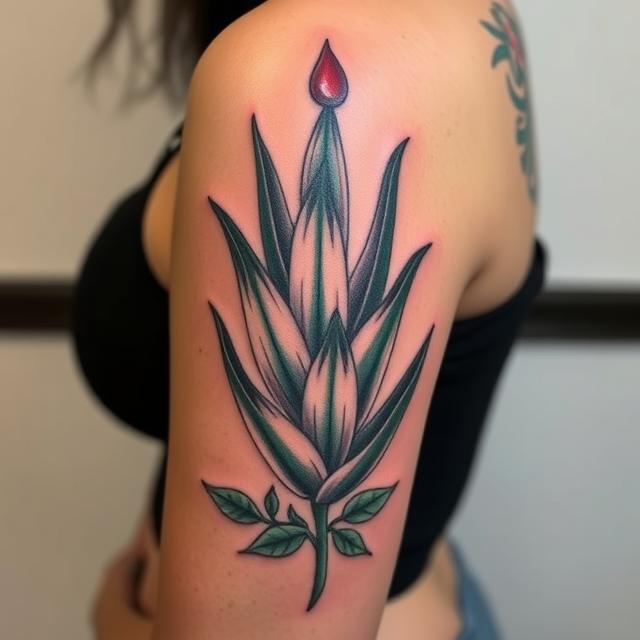
These tattoo designs aren’t just adornments—they’re powerful expressions of Mexican identity, spirituality, and womanhood. Each one tells a story, bridges past and present, and turns the body into a canvas of cultural celebration. Whether honoring ancestors, expressing personal strength, or embracing beauty through pain, these tattoos help women carry their heritage not only in their hearts, but boldly and permanently on their skin.
